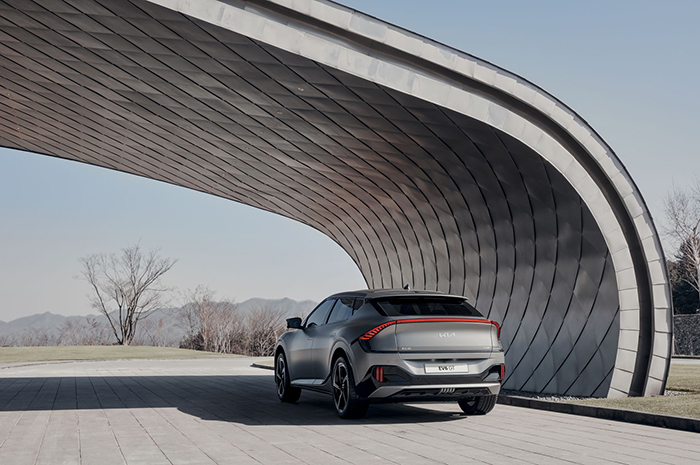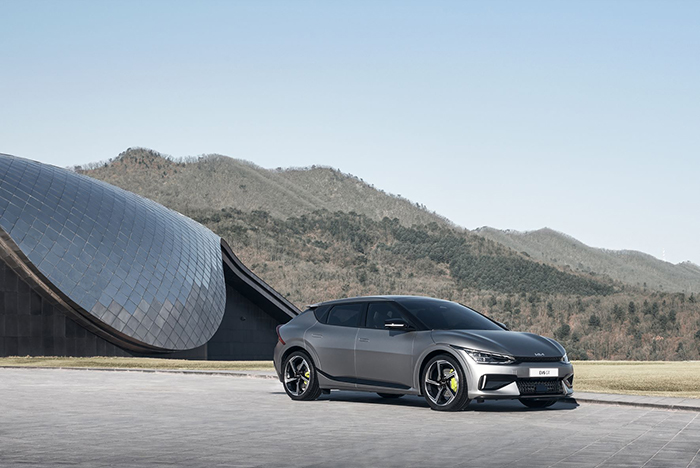The recently emphasised future plans of multiple automotive companies to either partially transform their fleets or go fully electric in what is thought to be a relatively short time frame has been a hot topic of conversation lately. The challenge in achieving these targets can be attributed one main reason — the slow development in which the infrastructure of electric vehicles (EVs) and battery electric vehicles (BEVs) are expected to thrive in.

To place this outdated mindset behind, several brands have stepped up to accelerate the process by investing heavily in the development of innovative technological breakthroughs centred around their smart, shared and sustainable mobility solutions. This momentous shift which includes positive change in customer perceptions, greater intervention from governments, and technological advancements are coalescing to focus attention on BEV adoption while delivering a promising foundation for the advancement of sustainable mobility.
Finding the edge by advancing EV transition
When it comes to the success in the EV market, there are several significant areas that organizations must capitalize on to find their competitive advantage. To be successful in the future, automotive brands will need to focus on their capabilities as original equipment manufacturers (OEMs) and will need to invest in and advance their EV business by adopting new business models and collaborating with other brands or manufacturers that offer the right capabilities. This requires a focused long-term strategy based on identifying where or how OEMs want to differentiate their value proposition, and the technological capabilities required.
One brand that has undergone a major reform with a clear vision of becoming a leader in the EV movement is Kia. Firstly, at the start of 2020, the brand introduced and began the implementation of its ‘Plan S’ strategy — an enterprising shift towards electric vehicles and customised mobility solutions. And secondly, as part of its Plan S, is its commitment to developing unique, and inspiring technologies to address the concerns around the cost premium of EVs, the shortage of charging infrastructure, and to create sustainable and environmentally conscious products — all while further accelerating the conversation around future mobility.
Mr. Yaser Shabsogh, Chief Operating Officer, Regional HQs, Middle East & Africa said: “Before we developed our plans to launch our latest fleet, we took a close look at not only the environment’s needs but also the needs of people. We noticed that people’s main concerns regarding BEVs are based around the belief that the cars will pose as a higher inconvenience when it comes to charging and speed. So, at a group level, we’ve developed a customer-driven strategy and technologies that address these core challenges to exceed our customers’ expectations. By 2026, we will have already completed a full BEV lineup of 11 new models through the introduction of our Electric-Global Modular Platform (E-GMP), which will bring forward a standardisation and modularisation process that offers flexibility in production. This platform will ensure an increase in the motor’s maximum speed by 70 per cent and will ensure the vehicle can be charged in approximately 18 minutes. Reaching showrooms in 2022, we will introduce the public to Kia’s EV6. The model that has embraced the latest rebranding and design which offers customers an elevated mobility experience.”
A big part of EVs success is underpinned by tech advancements and innovation. Here, brands are investing more in their research and development to produce platforms that give their EV models greater range and reduced charging times. Not only does this navigate the barriers posed but also ultimately make EVs more attractive to consumers. To this end, Kia has been specifically focusing on the architecture that will underpin its EV vehicles.
“At the end of 2020 Hyundai Motor Group unveiled its new E-GMP, the platform which will serve as the core technology for our next-generation BEV line-up. This is the culmination of years of research and development and presents Hyundai Motor Groups most cutting-edge technologies.” Says Shabsogh. “A symbolic turning point for EV development, this means increased driving range, strengthened safety features, and more interior space in our vehicles. Importantly however, this has allowed us to present a significant mobility solution that is a shining example of our progress and commitment to pioneering the EV industry.”
“BEVs based on the E-GMP can allow vehicle designers to pursue the so-called ‘Progressive Electrification Experience’ and more radical innovations for the driver’s and passengers’ benefit.” he added.
Infrastructure that Supports Sustainable Change.
It is no secret that the automotive industry has been developing at a much faster rate than the environment, infrastructure and processes it was going to be introduced to. However, this has been changing as governments have actively begun paving the way for individuals to switch to EVs by creating a supportive environment for them through generous incentives. This can be seen all over the GCC, and especially in the UAE where EV owners can enjoy the benefit of free parking across various parts of Dubai and can apply for free Salik tags for their EVs.
Yaser Shabsogh said: “We have definitely seen an increase in support from governments to create an environment that truly makes people more confident in purchasing EVs. This is part of the different GCC governments’ sustainability goals that are part of their national agenda, like Vision 2030 in KSA. There has been a noticeable move towards establishing more charging stations, especially in remote areas, which makes citizens feel more confident in the infrastructure available to them, rather than anxious about whether their next adventure is limited to a certain distance.”
Partnerships that Introduce EVs
During the past year, e-commerce services have skyrocketed, and this year the worldwide e-commerce revenue is expected to reach five trillion US dollars. People’s increased preference in e-commerce gives a significant rise in the growth of the global mobility services provided, which means an expansion in fleets. Herding this expansion towards a sustainable direction would require drivers to switch to BEVs. However, this leap currently poses three main challenges – the ability of drivers to afford BEVs, the charging time disrupts the flow of business and the driving range anxiety of being stranded if charging stations are limited. Once again, Kia has managed to find a solution to all three challenges.
When speaking to Yaser, he explained that: “A part of contributing to a better ecosystem definitely falls on global mobility companies, and it is our responsibility as leaders in the automotive industry to foster partnerships with these companies to encourage a switch toward adopting EVs. That is why Kia and Hyundai Motor Company have partnered with Grab, Southeast Asia’s largest ride-hailing company, to lower the barriers of drivers owning EVs by decreasing the total cost of ownership. Going a step further, to reduce driving range anxiety, drivers would be able to swap their e-moped batteries at GrabKitchen as they wait to collect food orders, which also contributes to lowering their downtime. Switching to EV should be made easy and seamless, and that is exactly what we are working on.”
With governments paving the way to encourage individuals to switch to EVs, more solutions being offered to mobility automotive services and a continuous flow of innovation from automotive leaders like Kia, the foundation towards a greener future thanks to BEVs is finally nearing a positive tipping point.


COMMENTS